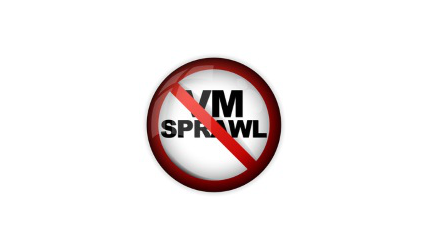The technology industry is predictable in one thing: the answer to every problem is more spending. Recently, the Gartner Group has been criticized for suggesting that enterprises should adopt a tiered approach to IT (Bi-Modal IT). Gartner recognized that organizations naturally manage varied projects differently. “Shadow IT” where a development team bypasses IT with Public Cloud services is an example of Bi-Modal IT. Many argue that a uniform approach based on DevOps and Continuous Delivery is needed for long-term IT success. Unfortunately, most organizations face the challenge of innovating while supporting a complex portfolio of technology and applications. What is needed is a technology that enhances existing application support as well as new development, while reducing license costs.
The Growing Role of Technology in Innovation and Competition
Technology change and disruption is among the leading source of enterprise success and failure. Five of the top ten Fortune 500 firms by valuation are technology firms. No industry is safe from disruption. Financial services, Medical, Retail, Travel, Transportation, and even Technology firms are being disrupted by startups employing new technologies. Amazon’s Web Services (AWS) is the fastest growing Linux and Database provider globally, with an outsized impact on Red Hat, Oracle, and Microsoft.
Identifying and Aligning with the Right Emerging Technologies
Successful enterprises make the right technology choices, and are willing to invest in technological change. In the 1990’s both Nordstrom and Goldman Sachs were Microsoft customers, but now proclaim a Linux and Docker focused strategy. Amazon, NetFlix, Google, Red Hat, and Uber are leaders due to their Linux and open source technology strategies. Few Venture funded startups are targeting the Microsoft platform, and Linux, NoSQL, and Cloud technologies are the skills most in demand.
Successful navigation of technology change can involve working with smaller companies, as Red Hat and Amazon AWS were both relatively small when Linux and Cloud computing were emerging trends. The seemingly safe bet on established vendors is often not the best choice for emerging technologies.
Emerging technologies are disruptive for both efficiencies and economy of use. Microsoft’s early success was based on growing market share through competitive but lower priced products. Amazon AWS arguably offers more innovative services, but is equally focused on expanding the Served Market through aggressive pricing. In both cases, early adopters realize economic benefits, and build competitive advantages with skilled employees, improved recruitment, and retention of talent.
Microsoft’s New Love of Linux Leaves Windows Applications Behind!
In a world where Linux and open source technologies seem to be the right direction, what can an organization do with major investments in Windows and Microsoft applications?
Microsoft is embracing Linux as an equal or even preferred development and hosting platform. Microsoft has open sourced the .NET and Xamarin frameworks, has developed a strategic relationship with Red Hat, and announced plans to deliver future SQL Server releases on Linux. Windows is also being redesigned to support Docker based containers, which is slated for release in Windows Server 2016.
Interestingly, Microsoft has demonstrated SQL Server container support on Linux, but has announced no similar plans for Windows Server 2016. This suggests that Linux is emerging as Microsoft’s preferred development platform over Windows (at least by the SQL Server division)!
Disrupt Your Status Quo and Cut Your Microsoft Server License Costs in Half!
A wholesale move to Linux is a daunting task, and is not be the right course for everyone. But, one technology has emerged that offers to bring Linux and Windows workloads together: Docker.
The technology industry is buzzing about Docker's solutions and software. Containers reduce the role of Virtual Machines, with a 2/3 reduction in VMs being typical. Containers allow developers to get more done, and are ideal for DevOps and Continuous Delivery. Docker enjoys industry-wide support by AWS, Microsoft Azure, Red Hat, IBM, Google, and others. Docker is also contributing toward a formal standard through the Linux Foundation. These are early days in Docker's succes, but the trend is clear.
WinDocks has been surprised to conclude that Microsoft’s Docker implementation for Windows is functionally limited, and may reflect a desire to preserve license revenues. We now believe WinDocks container support is unique, with more complete support of SQL Server and Windows applications. Early WinDocks users are proving the use of containers on existing Windows and SQL Server workloads, ranging from new product development and test, to support of legacy systems. WinDocks customers share an expectation of reducing Microsoft Server License costs by half or more, even as containers provide a path forward to an increasingly container oriented software world.
WinDocks preserves the option to upgrade to Windows Server 2016, while enabling innovation on current investments, and delivering license cost savings.
Test and Prove the Benefits
Who is this upstart WinDocks that makes such claims? WinDocks is a team of former Microsoft engineers who have logged a number of man years in development of containers for Windows. WinDocks is a port of Docker's open source project to Windows 8, Windows 10, Windows Server 2012, and Windows Server 2016, with full stack support for .NET, SQL Server, and Windows application containers. WinDocks supports all editions of SQL Server 2008, 2008r2, SQL Server 2012, 2014, and 2016.
The time to explore this technology is now. WinDocks was production released earlier this year, and is being explored by thousands of developers, who find that WinDocks works as advertised. Start by downloading the free Community Edition. In fifteen minutes your Windows machine will be enhanced with container support. If it works, deploy it on a small scale, and proceed based on your experience.
Download the Community Edition here
In closing we quote Eric Hanselman, of 451 Research:
"Transitions to next-generation technologies have to embrace the entire business in all its forms to reduce risk and achieve lasting success. IT has to evolve to support more capable service-delivery models across its resource catalog. Isolating the new from the old is a recipe for waste and obsolescence."
